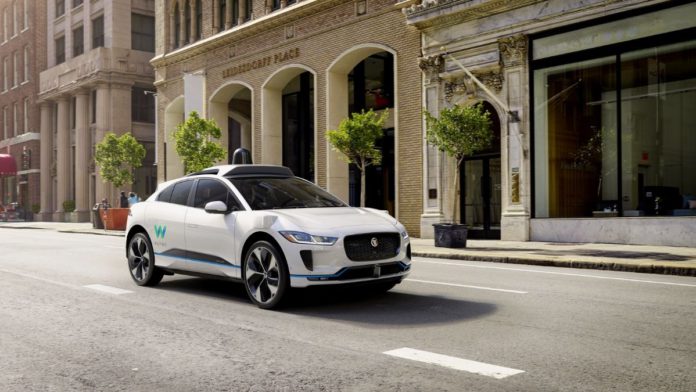Watching robotaxis in the streets will be a new spectacle for the residents of the city of San Francisco. Waymo, Alphabet’s autonomous vehicle unit, formally launched its Waymo One Trusted Tester program in the city on Tuesday, with a fleet of all-electric Jaguar I-PACEs outfitted with the company’s fifth generation of its autonomous vehicle technology. While this robotaxi service is open to select riders, Waymo has become the first manufacturer to offer autonomous rides to the public in San Francisco.
Waymo One was launched to the general public (with safety drivers) in December 2018, expanding on an early rider program limited to pre-approved, NDA-bound Phoenix residents.
Waymo began limited testing in San Francisco in February 2021, with company employees acting as passengers. The company’s current testing zone for self-driving and safety-operated cars covers around 100 square miles.
The Trusted Tester program is a rebranding of Waymo’s prior Early Rider Program, which debuted in Metro Phoenix in April 2017. This program, according to Waymo, is accessible to all the interested San Franciscans who are interested. Apart from using Jaguars instead of modified minivans, another difference is that, unlike in Arizona, a safety driver, dubbed as “autonomous expert” by Waymo will be present in the front seat, monitoring the car while it navigates San Francisco’s notoriously steep hills and tight streets. The driver will take over if the computer fails to adapt to a variety of unforeseen circumstances while navigating small, crowded roadways alongside pedestrians and cyclists.
Though Waymo has not disclosed how many people will be in this test group or how many Jaguars will be transporting passengers in the fleet. To enroll, people can go to the iOS or Android app store and download the Waymo One app. Passengers will be needed to sign a non-disclosure agreement that prohibits them from publicizing their experience. They cannot bring guests on rides either.
Riders will be encouraged to use Waymo’s self-driving service to assist them with their daily mobility needs. For the time being, the Jaguar rides are free and will operate in a limited area of San Francisco, including the Sunset, Richmond, Pacific Heights, Noe Valley, Castro, Haight-Ashbury, and other neighborhoods, with plans to expand over time. The service will be available seven days a week, 24 hours a day.
The Jaguar vehicles are equipped with Waymo’s fifth-generation autonomous driving technology. Riders need to push the trip start button once they are seated and bucked up to begin their journey. The robotaxi features a monitor in the backseat, which displays the vehicle’s perception systems in real-time, giving passengers a better view of what the self-driving vehicle “sees” while it autonomously navigates around San Francisco.
In the event that a passenger has to cut their journey short, riders have a pullover button — when pressed — Waymo Jaguar will pull over to a safe location and let them out.
Read More: Google’s Waymo Argues That UK Government Shouldn’t Cap Autonomous Vehicles On The Road
The race for self-driving vehicles is evolving into a marathon, with rivals experimenting in diverse ways in quest of finding the quickest, safest, and most profitable path to self-driving technology. And currently, the race is being dominated by robotaxi developers, who can attract private financing and borrow billions while bringing exorbitant valuations.
The robotaxi market is anticipated to rise due to increased demand for shared mobility, technical advancements in the autonomous vehicles sector, rising need for fuel-efficient public transportation, worldwide initiatives to minimize automobile ownership, and state-of-the-art infrastructure. Even the passenger market for robotaxis is bigger, while the industry consolidates further. Therefore, introducing robotaxis as one of the primary modes of transportation can encourage new business models and sources of revenue.
However, technological advancements necessitate a high level of creativity for self-driving robotaxis, and seamless navigation in congested areas might be a major ‘roadblock’ to their expansion. Even the pandemic effect cannot be ignored which rendered Uber to put a brake on its self-driving plans, while Zoox was acquired by Amazon. San Francisco is already lined with UBER and Lyft vehicles, so cruising in Waymo’s robotaxi will be a new phenomenon. At the same time, it will be interesting to watch how the autonomous vehicle leader navigates itself through the extremely diversified climatic conditions of San Francisco, tight curves and inclines of Lombard Street, and fog situations at Golden Gate.
Meanwhile, Waymo’s rivals are not lagging behind. Recently, Motional, an Aptiv-Hyundai joint venture, confirmed intentions to begin public route mapping and testing of its robotaxi in Los Angeles this month. It also plans to launch robotaxi services with Lyft in US locations beginning in 2023.


